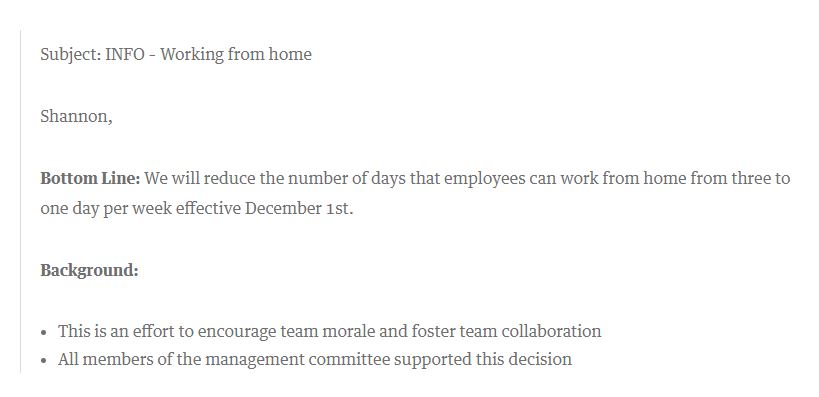

A few years ago, I was working with a consultant. We used to meet every week, over breakfast. And, as my daughter was going through a phase of waking up every night, I was invariably tired.
I remember one session, during which I had been particularly sluggish. Even a second double espresso could not push many coherent thoughts around my sleep-deprived brain. So I asked him to write me a short report, in the hope that I could consider his advice properly once my mental fog had cleared. ‘Sure,’ he said. ‘I’ll send it over later today.’
The document duly arrived in my inbox just after lunchtime, but I decided to save it till the morning, once I’d caught up on my sleep.
The next day, refreshed, I opened the document with keen anticipation. It took up about two pages and covered everything we’d agreed.
Yet I found the document pretty well impenetrable and I gave up after a couple of attempts at reading it.
Shorter ≠ better
It wasn’t that its sentences were too long or too dense. Most sentences ran to fewer than 20 words and each was reasonably digestible. Its language, too, was for the most part commendably clear. (I forgave the odd lapse into consultant speak, as I knew his advice and thinking were consistently sound.)
No. The reason I struggled was that, while he’d certainly created a document, he hadn’t actually written me a report at all. He’d simply produced a list of bullets – a very long list of bullets.
There’s a common assumption that the best type of report is one that delivers the most facts in the fewest words. The internet is full of articles advising just that approach and such articles are extremely popular.
Most of us are both busy and overloaded with information. So this is understandable. We’re often so distracted and desperate for relief from the information deluge that we’re primed to fall gratefully on any piece of advice that promotes the brief-equals-good approach and share it widely. In such a crowded world, efficiency is what we need – whether we’re talking about our schedules or our communications. And what could be more efficient than a list of bullets?
Giving the brain room to work
The trouble is that this vastly oversimplifies how our brains work. It’s based only on the way most of us think they work. And while we may want reports like that, it’s not what we actually need. (In fact, I suspect that such reports are often the ones that don’t get read.)
It’s not just in reading and writing documents or email that we fall into this trap. The same is true of how we plan our lives. A productive day is not necessarily one that crams in the most activities in ever-decreasing time-slots – not least because each one will provide more information and you may need to update the best course of action as you go. In other words, you need to allow the brain to do its work. (Despite this, countless time-management gurus make a good living encouraging us to stuff more and more into schedules that are already overloaded.)
Similarly, a bald summary consisting of a series of short points, stuffed together and devoid of context, will rarely work in the way we think it will or want it to. In simple terms, such documents are not ‘brain friendly’, even though it seems that they should be.
Military backing
The short=good advice was taken to a whole new level in a post on the Harvard Business Review blog a year ago, entitled ‘How to write email with military precision’. The post went viral (I suspect for the reasons I’ve already stated).
Some of its advice made sense, such as including keywords like ‘ACTION’ in the subject line to show something needs to be done. ‘INFO’ was another suggested heading, which also seemed logical, even if I can see emails with that title heading straight for the bin. (Tech-savvy staff might even set up an automated rule ensuring such messages bypass their inboxes altogether.)
Next up on the list of recommended headings was ‘DECISION’. That was sort of OK, though I was starting to feel uneasy at that point. They were beginning to sound a bit too much like barked orders. (Suggesting I type them in caps didn’t help.)
Then it all got a bit surreal. It’s not just that it recommended ‘COORD’ for something that needs co-ordination with a colleague. It’s the way it reduced what could be quite nuanced (ie human) exchanges to the barest of bones. Indeed, the article took this idea so far that any email that followed the author’s advice would almost certainly backfire (no pun intended) in the modern workplace.
Here’s an example from the post:

Open image transcript
Subject: INFO – Working from home
Shannon,
Bottom Line: We will reduce the number of days that employees can work from home from three to one day per week effective December 1st.
Background:
- This is an effort to encourage team morale and foster team collaboration
- All members of the management committee supported this decision
You are not a robot (and neither is your reader)
Most cognitive psychologists no longer think the brain is just like a computer, ever ready and waiting to be programmed with instructions. How we think and make decisions is way more complex and subtle than that. Yet that seems to be precisely the brain model that the author of this article was using. The structure appears to me to be based largely on how we wish people processed information.
This almost brutally brief message may be suited to the command-and-control environment of the battlefield. But this sort of military writing has absolutely no place in the modern work environment. It will make more enemies than friends and create more problems than it solves. Can you imagine how you’d feel if you got one of those things? Rolling out that style across an organisation could cause enough damage to relationships to send productivity through the floor. In doing so, it would have precisely the opposite effect to the one intended.
The dangers of bullets
And – despite leaving the battlefield behind – that brings me back to bullets (sorry). They have their place, but that place is within a document or message. With very few exceptions (a shopping list springs to mind), they should not be the document itself.
Bullets simply do not engage people and get them to focus. They’re like somebody else’s revision notes. They trigger recall of much more detail in the person who wrote them but are largely meaningless to everybody else.
Besides, the short=good school of business writing assumes we’re all too busy to focus on anything outside of what’s on our to-do lists already and that we always concentrate on our priorities. If this were really true, distractions like news websites would be out of business, as would Facebook, Twitter, Instagram and LinkedIn. For that matter, so would eBay or even the doughnut shop down the road that you pop out to when you’re avoiding writing your monthly management report.
There are so many of these distractions that it’s amazing that we ever get anything done. Logic would seem to suggest that we should only be able to concentrate for a few seconds on any one thing.
From flow to focus
And yet, somehow, we do manage to focus, at least for some of the time. Sometimes, that focus is the result of a conscious effort to shut out the noise and knuckle down to work. But, more often, our focus is a passive process, driven not by ourselves but by whatever it is we happen to be focusing on. Some writing draws our attention and holds it for minutes or even hours, no matter how long our to-do lists. Such writing almost seems to compress time, and it does so in spite of how busy we are.
If you’ve ever read a web page or email that you didn’t intend to – anything that wasn’t the reason you opened your laptop – then you’ll know what I mean. Such things engage you right from the start and they keep you engaged. Reading them is effortless. Ideas seem to magically glide from the screen to your brain by the shortest possible route. Somehow, they draw you in then just seem to flow.
Flow is the right word in this case. It’s a psychological state in which concentration is total, to the exclusion of everything else. And it’s a state that, despite how busy we are, we find ourselves in surprisingly often (when our heads are in our phones, for example).
Exactly how you induce this state in those who read what you write is a big subject and one for another post. Suffice to say for now that it involves writing captivating introductions and using a structure that anticipates how the reader is likely to think. Often, it involves storytelling, which has been shown to be one of the most effective communication techniques, as it reproduces the writer’s thought patterns in those who read or listen to the story. (Even academic papers that follow a narrative structure get cited in journals more often than those that don’t, as this study of more than 700 papers shows.)
Crucially, it involves putting the reader right at the heart of the document or message.
What it’s not is a state that’s likely to be achieved by writing like the military. At least, not like the military portrayed in the HBR article. (My experience of the defence sector suggests that portrayal is not necessarily typical anyway.)
And it’s not a state that you will ever achieve with page after page of bullets.
Image credit: Amy Walters / Dreamstime





